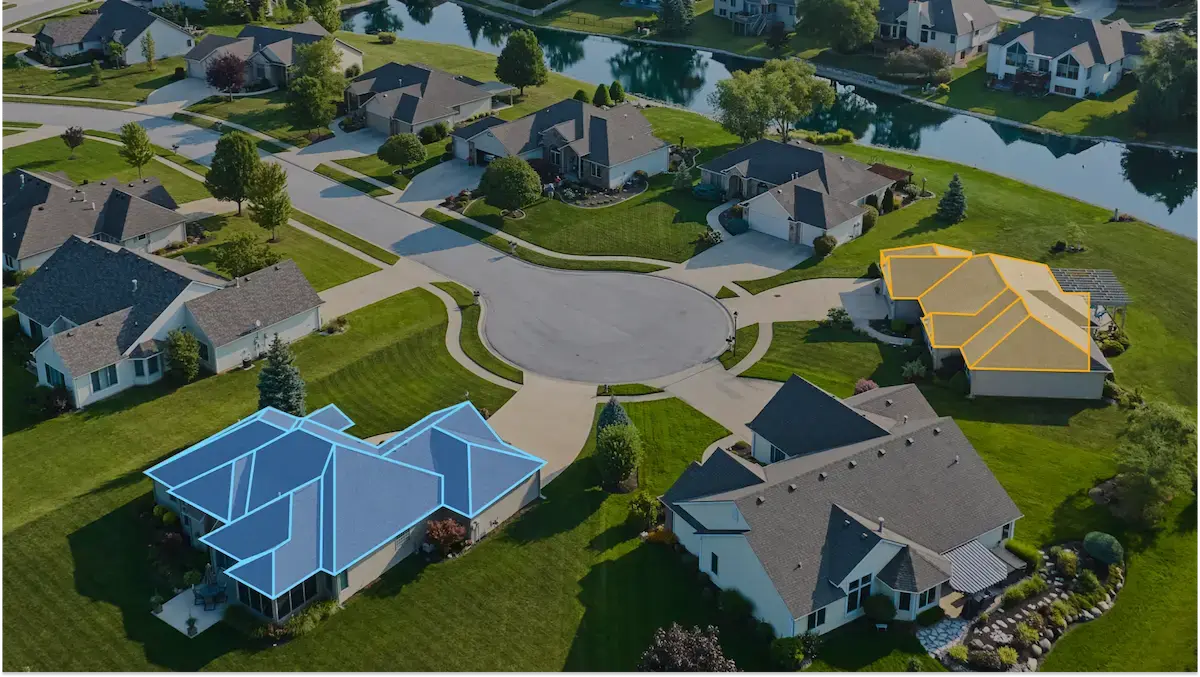When it comes to property insurance, roof claims stand out as both frequent and often among the most expensive. From the devastation of hurricanes to the widespread impact of hailstorms, roof damage consistently drives significant claim volume, especially within catastrophe-prone regions. Yet, amidst the urgent need to inspect, estimate, and settle these claims, one critical element is frequently overlooked or inconsistently applied: local building code requirements.
For any organization managing property claims, understanding and applying the correct building codes isn't just about regulatory compliance—it's also critical to ensuring accuracy, defensible documentation, and fostering policyholder trust.
The Hidden Impact of Building Codes on Roof Claims
Building codes impact the scope and cost of every roof claim. They dictate:
- Whether a full roof replacement is required versus a partial repair
- The specific type of underlayment or materials required
- Mandatory upgrades such as ice and water shields, drip edges, and ventilation changes
- Technical specifications, including nail count, deck attachment standards, and slope considerations
- Critical permit requirements that directly affect project timelines and documentation
Failing to apply the correct code can lead to a cascade of negative outcomes, including overpaid claims, contentious contractor disputes, increased supplements, and project delays that frustrate policyholders. For the carrier, this translates into inconsistent outcomes, avoidable expenses, and increased cycle times.
The Facts about Jurisdiction: It’s Not Always About the ZIP Code
Many organizations rely on mailing addresses or ZIP codes to determine the applicable jurisdiction. However, this assumption is flawed and financially detrimental in property insurance and address-specific zoning laws and codes.
Why? Because jurisdictional boundaries that govern code regulations don't match 45% of the time. A single ZIP code can encompass multiple cities, towns, and counties—each with its own distinct building codes, sales tax rates, and enforcement policies. An address listed as "Springfield" might, in reality, fall under a township, a county, or a special district with entirely different code requirements.
This discrepancy means that individuals handling claims, particularly during high-volume events or in unfamiliar geographies, are often left to guess which building codes apply. Even seasoned professionals frequently lack access to up-to-date codebooks or permit requirements for every local authority having jurisdiction (AHJ).
The consequence? Estimates based on assumptions rather than verified facts, resulting in claims that can be disputed, overpaid and causing supplements.
Jurisdictional & Code Accuracy is Important Across Many Roles at an Insurance Carrier
The absence of clear jurisdictional data creates pressure throughout the entire claims process and exposes the organization to widespread inefficiencies and inconsistencies.
- For executive leadership, accuracy and avoiding LAE (loss adjustment expense) are critical. Inaccurate code data directly contributes to financial leakage, necessitates re-inspections, and extends cycle times, negatively impacting key performance indicators (KPIs) and LAE.
- For those overseeing claims quality, the task of managing standards, reducing rework, and supporting their teams becomes significantly more complex when individuals lack the time or resources to verify jurisdictional data for every file.
- For individuals in the field or those handling claims at the office, the focus is often on rapid processing. If accessing accurate code requirements is difficult or unclear, there's a higher likelihood of missing requirements or applying incorrect ones, opening the door to supplements and contractor disputes.
The lack of jurisdictional clarity creates systemic pressure and exposes the organization to significant inefficiencies and inconsistencies.
The Solution: Accuracy and Automation from the Start
To effectively overcome these pervasive challenges, claims organizations require two fundamental capabilities:
- Precise jurisdiction identification.
- Verified, easily accessible code data.
This is precisely where OneClick Code delivers transformative and instant value. Our platform utilizes proprietary data technology to automatically identify the correct jurisdiction for any address—regardless of its mailing address—and instantly provides verified, enforceable building code data specific to that location.
This means that individuals handling roof claims gain immediate clarity on any address, residential or commercial, nationwide. Accuracy across the entire estimate reduces leakage and supplements.
- Permit Fee Costs
- Whether key line items on estimates are required or not, with a clear yes/no on items such as Ice & Water Shield and Drip Edge
- Sales Tax Amounts
- Accurate 3-year Wind and Hail History
Resorting to assumed codes and zip codes is not the answer. All of these details are delivered in clear, defensible documentation for accurate claims and a reduction in disputes and overpayments.
Building Code Accuracy Isn’t Optional
Roofing claims may appear straightforward on the surface, but beneath lies a complex web of local regulations that fundamentally determine scope, cost, and compliance. Ignoring this complexity—or attempting to manage it manually—only increases the risk of supplements, rework, and delays for policyholders.
By providing teams with jurisdiction-based accurate code data from the onset, organizations can achieve consistency and precision in one of the most common and complex claim types in the industry.
Experience the power of accurate, automated building code data. Try OneClick Code Today!

